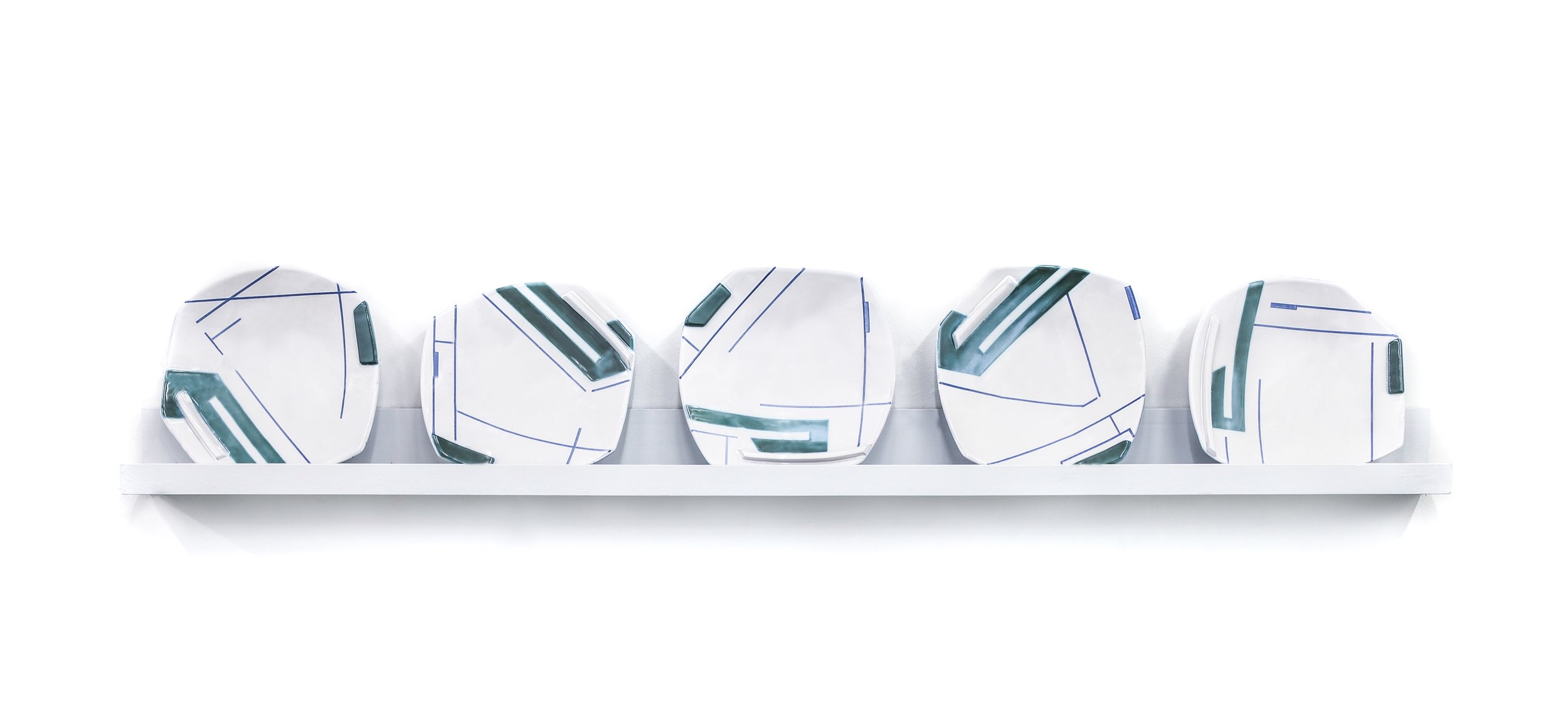
In my recent work, I am captivated by the relationship between ceramic cups and architecturally-inspired structures. My goal is to create a variety of abstract compositions which consists of these two elements: cups and structures. Drawing inspiration from modern architects like Charles Gwathmey, as well as childhood memories of sensory games such as puzzles, I approach each piece as a unique compositional challenge, one that I find deeply satisfying to solve. These compositions invite dual engagement: they can be appreciated as standalone visual experiences or explored interactively. Viewers are encouraged to rearrange the components and/or drink from the cups, making the work more personal and participatory. Through the act of fitting, placing, and interacting with the forms and surfaces, I aim to create a balanced and intriguing composition that presents a satisfying challenge both for myself as the maker and for the viewer as the user.
The motifs of my forms and surfaces, along with the methods of constructing them, are inspired by architecture, design theory, and shape psychology. How the visual language of specific shapes present emotions to the human brain intrigues me. I find the circular shape that is embodied by a cup to reference the cycle of life and community, while the idea of a square or rectangle to imply a sense of balance and security. This idea of balance and security is enhanced through each structures’ straight lines and hard ridges while curvilinear shapes invoke a sense of harmony and community in correlation to and among the cups. The structure acts now, not only as a foundation for the vessel but a space which advocates for function, interaction, and play. Similarly to the space architects produce for human indulgence.
Using old and new mechanisms of working, digital fabrication in tandem with a hand-built vessel, allows my work to highlight dissimilarities while finding ways to connect their potentials. The digital fabrication process within my work allows for more form manipulation that corresponds with the language of architecture and design. C.A.D. (Computer Aided Design) software allows me to develop a design for a plan. Through a series of planes, segments, and shapes, my designs are thought out and redrawn across a constructed grid. This designing process also corresponds with the surface application on my cups. What once was a grid, is now deconstructed. Each line is intuitive yet implicit. I am creating a plan, a system, a blueprint that activates the entity of the architectural structure. I am both the designer and the artist.
I am interested in pottery as a means of entry to an experience. Like architecture, a pot solicits interaction, not just viewing. The meaning of the vessel changes through experience, gaining content through use. By exploring the intersections between craft and design, I hope to enhance the art and act of dining with an emphasis on interaction, intention, and play in each piece’s form and surface.
